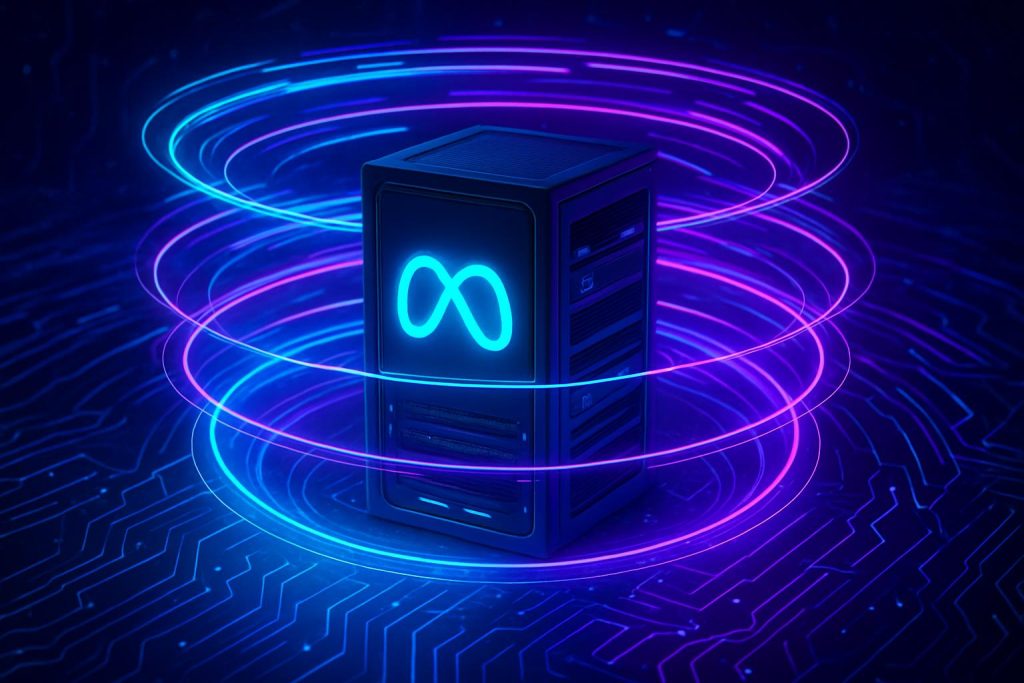Listen to the article
CoreWeave, backed by Nvidia, has signed a landmark $14.2 billion agreement with Meta to provide cloud infrastructure for AI workloads through to 2031, marking a significant step in the tech giant’s AI expansion and raising questions about market sustainability.
CoreWeave, a prominent cloud computing provider with significant backing from Nvidia, has secured a landmark $14.2 billion agreement with Meta to supply cloud computing infrastructure through to December 2031, with an option to extend the deal into 2032. This deal positions CoreWeave as a critical player in powering AI workloads for one of the world’s largest technology companies, reflecting the escalating investments Meta is making in artificial intelligence and data centre capabilities across the United States.
Meta’s commitment grants it access to CoreWeave’s infrastructure, which includes Nvidia’s latest GB300 systems, designed to meet soaring AI computational demands. The agreement came to light through a filing with the U.S. Securities and Exchange Commission and signifies Meta’s ongoing strategy to lock in computing capacity as AI adoption intensifies. Industry analysts highlight that Meta is fostering a substantial build-out of AI infrastructure and acquiring top-tier talent, with this agreement underscoring the scale and urgency of these efforts.
This $14.2 billion deal builds on CoreWeave’s expanding role in the AI ecosystem. Earlier this year, CoreWeave inked a sizable agreement with OpenAI, valued at $12 billion, which included a $350 million equity stake for OpenAI in CoreWeave. CoreWeave has also just expanded this partnership with OpenAI by an additional $6.5 billion, raising the total to $22.4 billion. These significant arrangements have propelled CoreWeave’s valuation to approximately $60 billion and driven a 12% surge in its stock price following the Meta announcement.
However, these large-scale agreements have sparked some concerns about potential “bubble” dynamics in the AI infrastructure market. E-marketer analyst Jacob Bourne noted that deals involving companies interconnected through supply chains and investments—such as Nvidia’s chips powering CoreWeave’s data centres, which then serve firms like Meta—create an insular ecosystem marked by massive financial flows. While this complexity fuels worries about an overheated market, Bourne also suggested that the AI sector’s expansion beyond a core group of companies, known as the “magnificent seven,” could help diversify risks and support sustainable growth.
CoreWeave is also actively pursuing expansion and innovation beyond infrastructure supply. Earlier this year, the company acquired AI developer platform Weights & Biases, a move valued at around $1.7 billion according to industry reports. This acquisition is intended to enhance CoreWeave’s cloud services with advanced AI model training, evaluation, and monitoring capabilities, further embedding it within the AI development lifecycle. Additionally, CoreWeave recently launched CoreWeave Ventures, an initiative aimed at fostering startups and technologies that accelerate AI ecosystem growth. This programme offers capital investment, access to a specialised cloud platform, and strategic support to entrepreneurs building new AI solutions.
The company’s rising profile follows a successful initial public offering earlier this year, which saw its earnings grow by 400% in the first quarter post-IPO. In an industry increasingly defined by enormous investment in cloud infrastructure, CoreWeave stands out as a key intermediary facilitating AI innovation for giants like Meta, OpenAI, and others including Microsoft and Nvidia as customers.
According to CoreWeave, deals such as the one with Meta highlight the importance of partnerships in driving AI breakthroughs forward. But with AI infrastructure investments running into tens of billions, watchers remain cautious about how these market dynamics will evolve in the coming years.
📌 Reference Map:
- Paragraph 1 – [1], [2], [6]
- Paragraph 2 – [1], [2], [3], [7]
- Paragraph 3 – [1], [5]
- Paragraph 4 – [1], [4], [5]
- Paragraph 5 – [1], [2], [3], [5], [7]
Source: Fuse Wire Services


